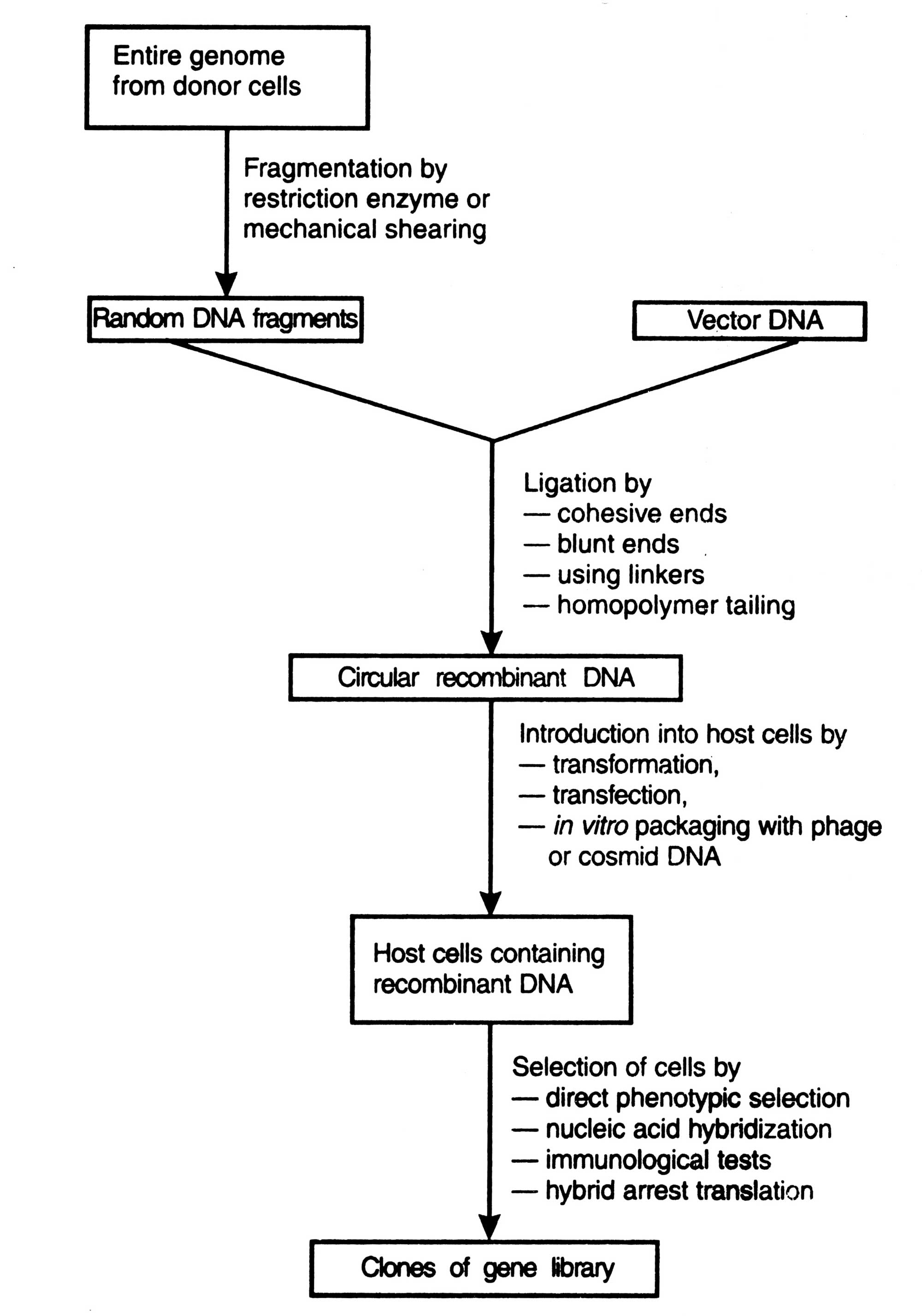Gene Bank or Genomic Library
Gene bank or genomic library is a complete collection of cloned DNA fragments which comprises the entire genome of an organism (Dahl
et al., 1981). Gene bank is constructed by a shotgun experiment where whole genome of a cell is cloned in the form of random and unidentified clones. The clones of DNAs are produced by
(i) isolation of DNA fragments to be cloned,
(ii) joining the fragments to a suitable vector (usually phage 1),
(iii) introduction of recombinant DNA into host cells at high efficiency to get a large number of independent clones,
(iv) selection of the desired clones, and
(v) use of clones for the construction of gene bank (Fig. 3.9).
Size fractionation of DNA (into about 10 Kb or more in size) to be cloned is important in approaching the maximum cloning capacity of the vector used. However, DNA fragments of a size not suitable for cloning will be ligated to vector and will lower the efficiency of introduction of the recombinant DNA into cells. DNA fragments of the suitable sizes can be obtained through particle digestion with several restriction enzymes and by agarose gel electrophoresis gradient centrifugation (Dahl
et al, 1981). These fragments are cloned without any attempt to select for particular sequences. Bacteria containing recombinant DNA are plated to give rise individual colonies. Each colony contains a fragment of genome. If the size of the fragments is small, more colonies are needed to be grown just to be sure for the presence of any particular gene. It has been calculated that for 10 Kb fragment, about 1.5 x 10
3 colonies are required for the
E.coli genome and about 2 x 10
6 colonies for
Homo sapiens (Boffey, 1987).

Fig. 3.9. Methods of construction of a gene library.
Role of Introns
In eukaryatic genome the genes contain introns which inhibit their encoding sequence. Therefore, to remove this mistake the whole gene including introns is transcribed and the introns are cut out from the mRNA. The remaining pieces (exons) are spliced together to give the mature mRNA which is further translated to form cDNA. If one wishes to get true expression from the original gene it can be possible only when the original gene lacks the introns.
Moreover, it is likely to synthesize each step automatically by machines for the production of economic products on a large scale. Therefore, a desired nucleotide can be produced. Synthesis of a gene may be easy if the amino acid sequence of a polypeptide is known. This technique was applied for the synthesis of somatostatin, a polypeptide hormone, by bacteria.





